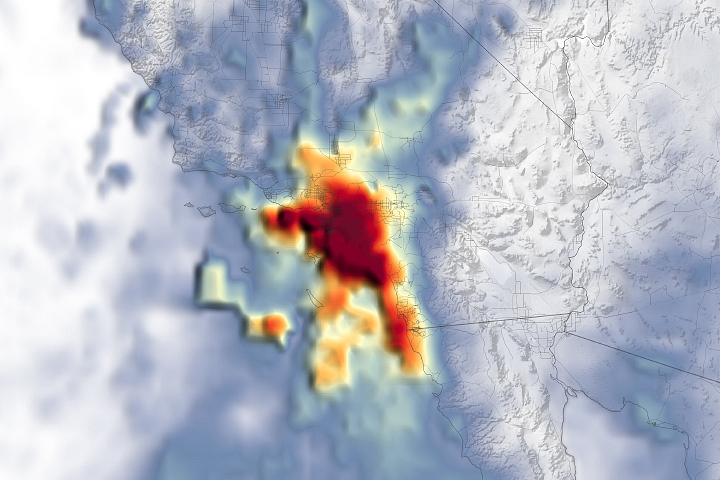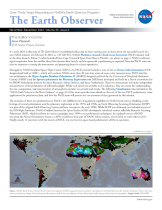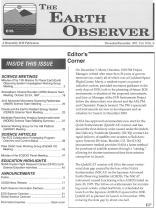- Home
- Missions
- Data
- Communications
- People
- The Earth Observer Newsletter




Recent Imagery
You will be directed to the NASA Visible Earth webpage when you select Images by Mission below, or click on the images at right that are randomly generated to represent four out of all possible topics.
The Earth Observer: Nov - Dec, 1997
In This Issue
Click title below to view page
SCIENCE MEETINGS
Minutes of the 13th Mission To Planet Earth/Earth Observing System Investigators Working Group Meeting .... 3
Atmospheric Infrared Sounder (AIRS) Science Team Meeting, October 22-24, 1997 .... 18
Joint Advanced Microwave Scanning Radiometer (AMSR) Science Team Meeting .... 20
Clouds and the Earth's Radiant Energy System (CERES) Science Team Meeting .... 22
Moderate Resolution Imaging Spectroradiometer (MODIS) Science Team Meeting Summary .... 27
Science Working Group for the AM Platform (SWAMP) Meeting ..... 32
SCIENCE ARTICLES
The ECS Collaborative Prototyping Program: Overview and Current Status ..... 39
Polar DAAC User Working Group (PoDAG XII) Meeting ..... 43
Minutes of the EOSDIS Panel Meeting .... 47
EDUCATION HIGHLIGHTS
NASA Dryden Flight Research Center (DFRC) Earth Science Education Activities .... 42
ANNOUNCEMENTS
Kudos .... 2
USGS-News Release .... 17
Earth Science Information Partners .... 37
EOS Science Calendar ... 51
Global Science Calendar ...... 51
Information/Inquiries ..... Back cover
Editor's Corner
Michael King—EOS Senior Project Scientist
On December 3, Marty Donohoe, EOS PM Project Manager, retired after more than 30 years of government service, nearly all of which was at Goddard Space Flight Center. Marty, a resident expert on passive radiative coolers, provided enormous guidance in the early days of EOS, both in the planning of future EOS instruments, evaluation of the proposed instruments, and later as Manager of the EOS Instruments Project before the observatory was altered and the AM, PM, and Chemistry Projects formed. The PM-1 spacecraft and instruments are now in development and on schedule for launch in December 2000.
NASA has approved an immediate new start for the Quick Scatterometer (QuikSCAT) mission and has placed the first delivery order issued under the Indefinite Delivery / Indefinite Quantity (ID / IQ) contract for rapid delivery of satellite core-systems to Ball Aerospace Systems Division, Boulder, CO. The ID/IQ procurement method provides NASA a faster method for purchase of satellite systems through a "catalog," allowing for shorter turnaround time from mission conception to launch.
The QuikSCAT mission will fill in the ocean vectorwind data gap created by the loss of the NASA Scatterometer (NSCAT) on the Japanese Advanced Earth Observing Satellite (ADEOS). The NSCAT instrument ceased functioning when ADEOS failed on June 30, 1997. The follow-on scatterometer for monitoring ocean winds, called Sea Winds, is scheduled for launch on the Japanese ADEOS-11 spacecraft in 2000. QuikSCAT is planned for launch in November 1998, reducing the data gap by about one-half.
Read more...

